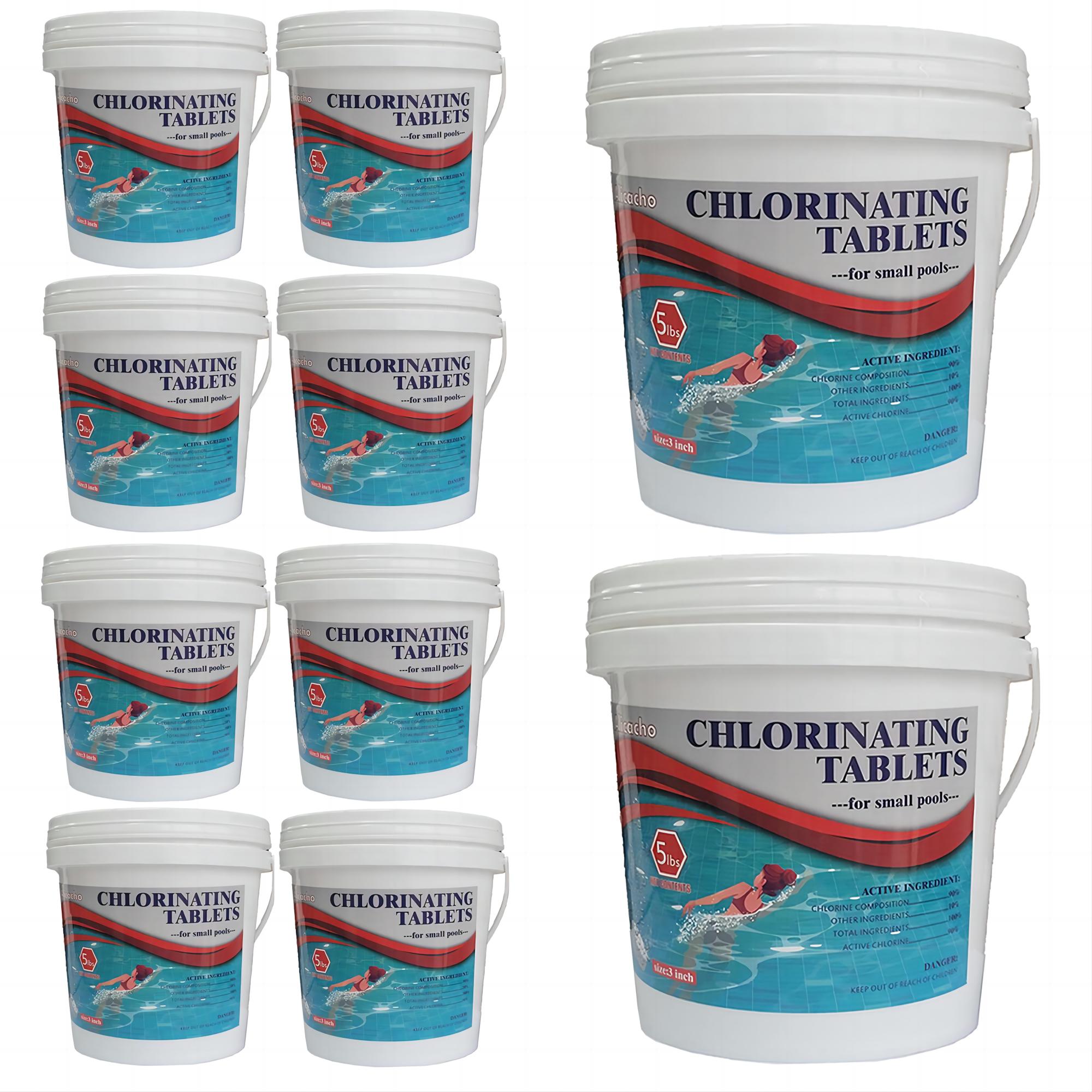As a new pool owner, you might find yourself perplexed, as you need to understand and utilize a variety of chemicals to maintain your pool's cleanliness. To start, you need to consider which type of chlorine to use for pool treatment, but you soon discover that there are two distinct categories: stabilized chlorine and unstabilized chlorine.
Although their names sound alike, there are significant differences between them. So, what exactly are stabilized chlorine and unstabilized chlorine? And is it truly crucial to choose one over the other? In short, yes, it's absolutely essential. Let's delve deeper to grasp the distinctions between these two and help you make an informed decision.
Unstabilized Chlorine:
Cyanuric acid serves as a stabilizer, enabling chlorine to persist in the pool for extended periods. By incorporating cyanuric acid, chlorine's efficacy endures under sunlight exposure, as the acid counters the degradation caused by UV rays. On the other hand, unstabilized chlorine refers to chlorine without the addition of cyanuric acid. This means unstabilized chlorine rapidly breaks down due to solar UV rays, necessitating frequent chlorine additions and resulting in diminished disinfection potency.
Despite unstabilized chlorine's susceptibility to sunlight, it still has its applications. It's particularly suited for indoor swimming pools, where sunlight impact is irrelevant. Additionally, unstabilized chlorine can be used as a shock treatment and proves to be a swift and effective solution for frequently used pools. However, note that unstabilized chlorine's persistence in the pool is limited. You must monitor chlorine levels closely, maintaining proper levels (typically around 3 ppm), and adding as needed.
Types of Unstabilized Chlorine:
-
Calcium Hypochlorite (Cal-Hypo): One of the most common types of unstabilized chlorine. Based on calcium hypochlorite, usually available in granular or powder form and can also be found in tablet or ice cube forms. It's used for shock treatment, dissolves quickly, and raises water's calcium hardness level. Effective chlorine content is approximately 65-75%, falling within the medium chlorine efficiency range.
-
Liquid Chlorine: Often considered one of the best types of unstabilized chlorine. It's pre-diluted in containers with 85-90% water content, usable for residual disinfection and shock treatment. Adding it to water increases salinity, with concentration usually ranging from 10-15%. Despite being relatively weaker, higher dosage is required.
-
Lithium Hypochlorite: A less common and unpopular form of unstabilized chlorine. Typically available in granular form, it dissolves relatively quickly, containing around 35% effective chlorine.
Stabilized Chlorine:
Stabilized chlorine, on the other hand, contains cyanuric acid, enhancing its effectiveness in the pool. Cyanuric acid shields chlorine from rapid degradation under sunlight, resulting in prolonged effectiveness. Compared to unstabilized chlorine, you don't need to add chlorine as frequently, as stabilized chlorine's effects endure longer.
Types of Stabilized Chlorine:
- Trichlor (Trichloroisocyanuric Acid): One of the most common and widely used forms of stabilized chlorine. Based on cyanuric acid, it releases chlorine gradually, ensuring sustained disinfection. Trichlor is usually available in solid tablets, granules, or powder and is dissolved in containers before being added to the pool. Its high chlorine efficiency is around 90%, typically used for routine disinfection rather than shock treatment.
- Dichlor (Sodium Dichloroisocyanurate): Another prevalent form of stabilized chlorine, also based on cyanuric acid. Unlike trichlor, dichlor dissolves faster. It's available in granular or powder form, suitable for shock treatment as well. Effective chlorine content is approximately 56-62%, falling within the medium chlorine efficiency range. It's commonly used for shock treatment in small pools and spa centers.
Should I Use Stabilized or Unstabilized Chlorine?
When deciding whether to use stabilized or unstabilized chlorine, there isn't a fixed correct answer. Your choice depends on your pool's characteristics and your needs.
-
If you have an indoor pool or need to frequently address water disturbances, unstabilized chlorine might be the better choice.
-
If you have an outdoor pool and want a more cost-effective way to maintain it, stabilized chlorine might suit your needs better.
Remember, excessive stabilizer in the pool diminishes chlorine's effectiveness, while insufficient stabilizer leads to rapid chlorine breakdown under sunlight.
The chart below recommends how much free chlorine is needed to effectively sanitize your pool based on the levels of cyanuric acid in the pool.
| Cyanuric Acid (Stabilizer) | Free Chlorine Required |
| 20 | 2 |
| 30 | 2.5 |
| 40 | 3 |
| 50 | 4 |
| 60 | 4.5 |
| 70 | 5 |
| 80 | 6 |
| 90 | 7 |
| 100 | 8 |
More chlorine is needed to maintain the same sanitizing power as cyanuric acid (stabilizer) levels increase.
In conclusion, regardless of which type of chlorine you opt for, you can ensure your pool remains clean, disinfected, and inviting for a refreshing swim.





